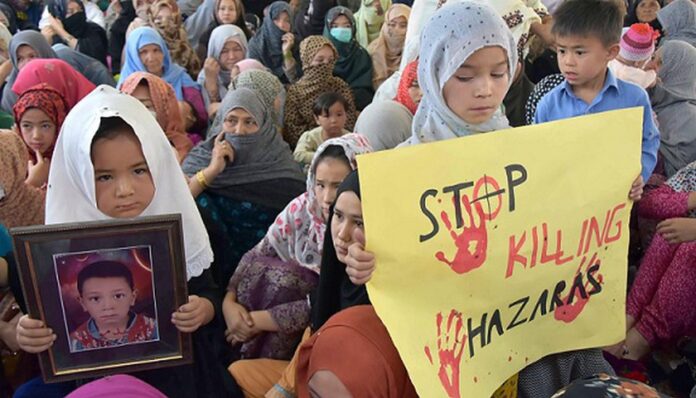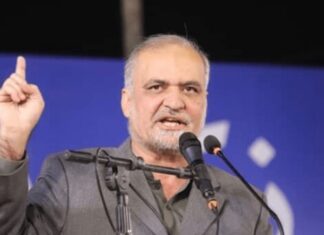A drastic situation was being faced by the individuals of the Hazara community in Balochistan once again because 11 persons from it were slaughtered by terrorists of Islamic State of Iraq and Levant’s Khurasan chapter that continued the legacy of sectarian and ethnic violence that used to be conducted by the terrorists of the Lashkar-e-Jhangvi in the region. The Hazara community is quite vulnerable and the violence against them has no doubt the capability of becoming a potential fault line for the state of Pakistan being exploited by foreign players among the anti-state elements which fuel the violent sectarian elements and ethnonationalists of Balochistan. This piece will focus on the possibilities of foreign intervention in the case of Hazara persecution in the region which has been proven to have had involvements of Indian agencies via the territory of war-affected Afghanistan.
The persecution of Hazara peoples had been a major violation of International Humanitarian Law because it is not only common in but also inside. The historic factors of their settlement in the regions of Pakistani Balochistan and Afghanistan, as well as their strong connection with the Shia Muslim community of Iran, are major catalysts which makes them as the easy target of being killed, tortured or slaughtered by those with extremist Wahhabi tendencies or racist tendencies among Pashtuns and Baloch. In the current era, especially after the events of 9/11 and the further strengthening of Wahhhabi extremist doctrines in the region, had paved the way for the spreading of sectarian violence against the Shia Hazara Muslims inside Balochistan.
The major events of persecution that are important in the unfortunate violence being committed against the Hazaras were the massacre in Quetta on the day of Ashura in 2004, the killings of Hazaras in the Mastung Massacre, the playground massacre in Quetta, the slaughter of Hazara pilgrims coming back from Iran, the two major bombings against Hazaras in 2013, the massacre in Akhtarabad, the 2003 bombing on Hazara Imambargah and most importantly the recent slaughter of Hazaras in Machh. Even in the target killings, some major political figures, social workers and sportsmen also been targeted for killings in the extremist and sectarian violence.
No doubt, such massacres and large scale killings of the people, specifically of the Hazara community, who also remained the target of socio-economic discrimination and structural violence, were due to factors that had been created by the administrative bodies in Pakistan, but there was also the confirmation of involvement by Indian agency Research and Analysis Wing (RAW)’s major agent Kulbushan Jadhav. He confessed in the statement he made after he was arrested by Pakistani authorities for espionage operation that India had been involved in the fueling of ethno-nationalist and sectarian violence in the region.
The government of Pakistan had also shown many concerns about the way that the Indian state agencies and government can possibly be involved in the backing of outfits like ISIL (Khurasan) which operates from Afghanistan while conducting acts of violence in the Pakistani province of Balochistan. The dots are being joined up by different Pakistani officials and think tanks about the involvement of the Indian government, with confirmed sources towards the secessionist tendencies in the province in shape of the Baloch Liberation Army (BLA) and Baloch Republican Army (BRA), and the possibility can be there also of its backing the extremist militants and terrorists of ISIL (Khurasan) while fueling the violence in the region on sectarian basis. Prime Minister Imran Khan said in his statement that the hands of India are there in the recent activities of sectarian violence that was happened in Machh district. The possibilities of Indian government and state agencies backing the militant factions against the state of Pakistan had been also proved by the state intelligence agencies of Pakistani state, including Directorate of Inter Services Intelligence (ISI), the Directorate General of Military Intelligence (MI) and the Intelligence Bureau (IB).
It has even been confirmed through the sources in form of statements of leading Indian think tanks, journalists and retired military officials that the fault lines inside Pakistan are to target the Shia communities for paving ways for the violence and to make platforms for the conduct of violence on sectarian basis by creating a lot of chaos among the different Muslim sects inside Pakistan.
These are the major possible factors which had proven the point that the sectarian violence, especially the recent act which was conducted against the coalminers belonging to the Hazara Shia community, has proven the very point that the possibility is very much there of the involvement of the Indian government as an actor of fueling violence.
In the very crux of this argument, the point is to be added that the persecution of Hazaras had been a major violation of International Humanitarian Law because it is not only common in Pakistan but also inside Afghanistan. The historic factors of their settlement in the regions of Pakistani Balochistan and Afghanistan as well as their strong connection with the Shia Muslim community of Iran are major catalysts. The difficult condition being faced by individuals from the Hazara community in Balochistan was shown once again by 11 persons from that community being massacred by extremist elements.
The possibility of the terrorist wings being supported by the Indian government exists because of the past confirmed terror activities in which the position of India was very much clear. Such massacres and large-scale killings of people, specifically of the Hazara community, is not just because they were the target of socio-economic discrimination and structural violence due to the factors that were paved by the administrative bodies of the country, but also because a senior RAW man confessed to it.























